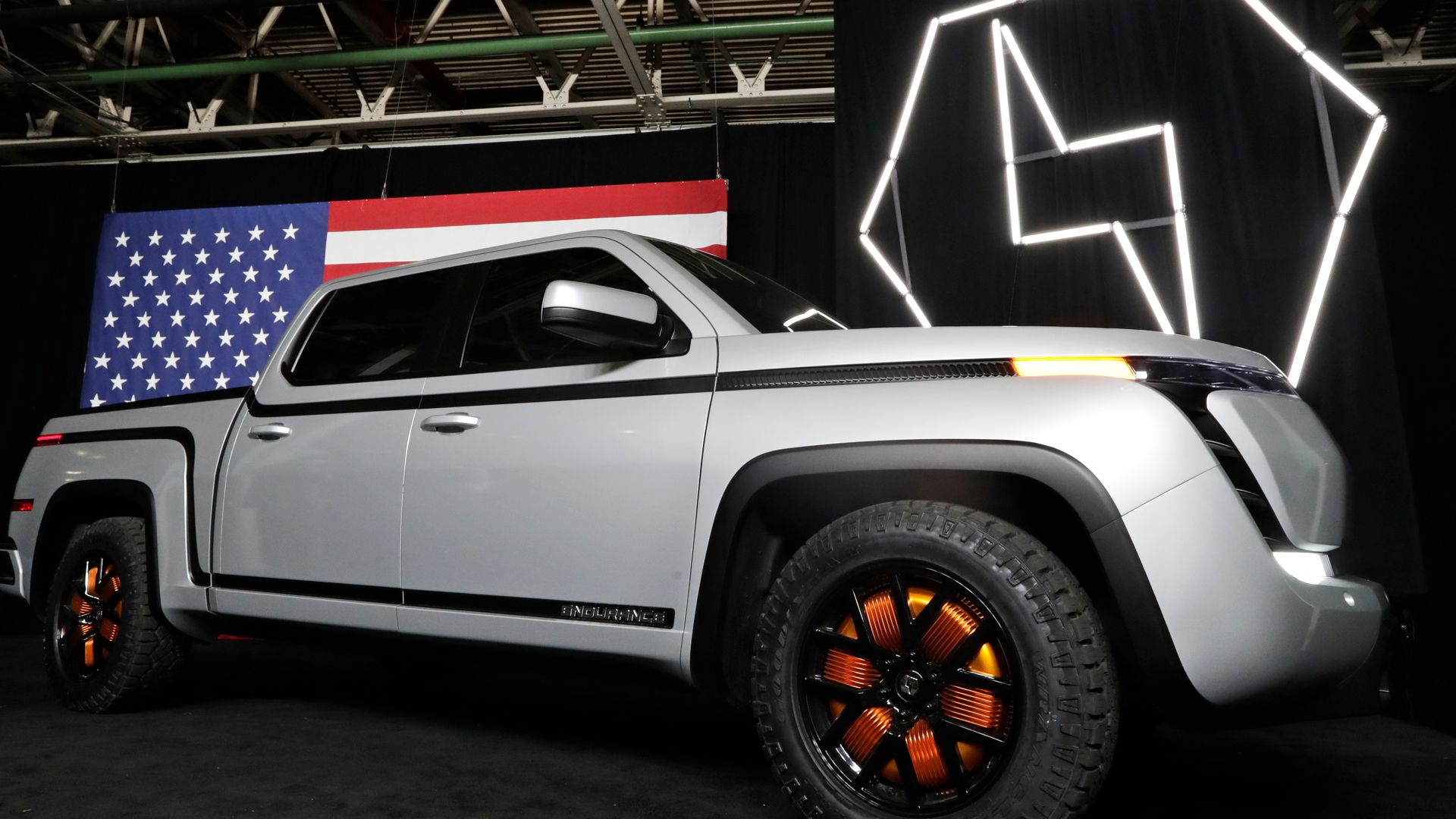
LET’S TALK TRUCKS.
THEY MADE UP 3 OUT OF THE 5 BEST SELLING VEHICLES IN THE U-S LAST YEAR.
AND AS MANY AUTOMAKERS LOOK TO ELECTRIFY – WE’RE LEARNING MORE ABOUT THE CHALLENGES THEY FACE.
WE’LL START WITH RIVIAN. , ONCE DUBBED THE TESLA OF TRUCKS, THE COMPANY IS NOW LOOKING AT SOME STARK FINANCIAL LOSSES.
BUILDING EV TRUCKS HAS BECOME SUCH AN EXPENSIVE ENDEAVOR, THAT DESPITE SELLING ITS VEHICLES FOR AN AVERAGE OF EIGHTY THOUSAND DOLLARS, RIVIAN HAS STILL BEEN LOSING AROUND THIRTY-THREE-THOUSAND DOLLARS FOR EACH ONE SOLD.
EVEN LARGER AUTOMAKERS LIKE FORD AND TESLA HAVE ENCOUNTERED PROBLEMS OF THEIR OWN WITH EV TRUCKS.
THE PRICE OF THE F-ONE FIFTY LIGHTING HAS BOUNCED AROUND IN RECENT MONTHS.
FORD PAUSED PRODUCTION AND SALES TO DEAL WITH DEFECTIVE BATTERIES – AND THEN HIKED THE PRICE BY NEARLY 20-THOUSAND-DOLLARS AFTER THOSE PROBLEMS WERE RESOLVED. THE COMPANY SAID THIS WAS DUE TO FACTORS LIKE MATERIAL COST INCREASES, AND SUPPLY CHAIN CONSTRAINTS.
AFTER NUMEROUS CANCELLATIONS BY PROSPECTIVE CUSTOMERS FORD REVERSED COURSE AND SLASHED PRICES OVER THE SUMMER.
MEANWHILE, TESLA’S LONG-ANTICIPATED CYBERTRUCK IS FACING ONGOING DELAYS.
CEO ELON MUSK PREVIOUSLY SAID HE HOPED TO ROLL OUT THE FIRST CUSTOMER TRUCKS AT AN EVENT IN LATE SEPTEMBER, BUT THAT TARGET HAS NOW COME AND GONE WITH NO WORD YET ON ANY FUTURE LAUNCH PLANS.
DESPITE THIS LATEST DELAY, TESLA HAS STILL BEEN DELIVERING CYBERTRUCK LAUNCH APPAREL TO ITS EMPLOYEES IN RECENT WEEKS. A SIGNAL AN EVENT COULD BE COMING SOON.
THE CYBERTRUCK WAS SUPPOSED TO START COMING OFF THE ASSEMBLY LINE IN 2021. AN ESTIMATED TWO MILLION PEOPLE HAVE SIGNED UP FOR A ONE HUNDRED DOLLAR DEPOSIT TO RESERVE THEIR PLACE TO PURCHASE THE TRUCK WHEN IT IS EVENTUALLY READY.
SIMILARLY TO FORD’S PREVIOUS PRICE HIKES THOUGH, THE COST OF THESE CYBERTRUCK’S HAS ALREADY RISEN FROM ITS ORIGINAL STICKER PRICE, WITH MUSK ADMITTING THAT INFLATION AND OTHER VARIOUS ISSUES HAVE PLAYED A FACTOR.
HOWEVER, CONSUMERS HAVE SHOWN A WILLINGNESS TO EXPLORE PURCHASING THESE EV TRUCKS FROM TESLA, FORD AND OTHERS.
BUT WHETHER OR NOT THE ULTIMATE PRICE POINTS ON THESE VEHICLES WORKS FOR BOTH CUSTOMERS AND AUTOMAKERS WILL DETERMINE HOW WIDESPREAD THEIR MARKET BECOMES MOVING FORWARD.











